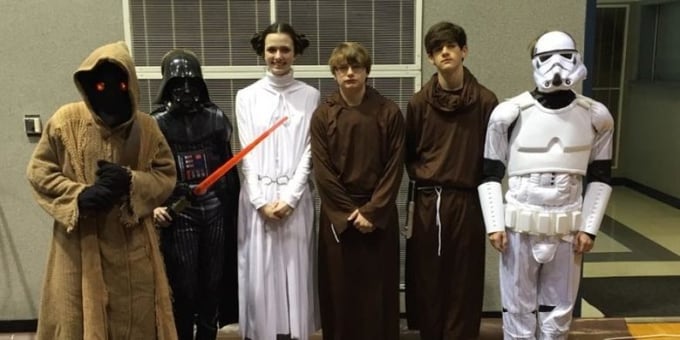Trisha Gilbreath is a PLTW Engineering teacher and a math teacher at Northwest Rankin High School in Flowood, Mississippi. She has been teaching for over a decade and joined the PLTW community two years ago. Trisha’s hobbies include anything sci-fi related.
Last year was my first year as a PLTW Engineering instructor. I taught Introduction to Engineering Design (IED), enjoyed every minute of it, and really honed my acting-like-I-know-what-I'm-doing skills.
In order to keep the engineering program going in my school, I knew I would need support from the administration, parents, district, and local businesses. The task of keeping the community informed of the amazing things my students were learning and creating seemed daunting until I decided to put the students in charge of it. At the end of the first quarter, I asked my students to write an article about their experience so far in IED. I told the students that the articles may end up in a newsletter, and I even offered bonus points for the best articles to encourage them to take the task seriously.
I compiled the articles, sent out the newsletter to everyone who might possibly be interested, and the response was overwhelmingly positive. However, that positive response was not what I found truly remarkable about the newsletter. The impact that newsletter had on my teaching was so much more important. The articles gave me invaluable insight into my students' learning!
Last year our program nearly doubled, thanks in part to the articles my students wrote. I started teaching Principles of Engineering (POE) this year, and I have continued to have my students write articles. Sometimes I’m surprised by what they liked. Sometimes I'm even more surprised by what they disliked! I often find they still have misconceptions that need to be addressed. All of this information directly or indirectly influences my teaching. In fact, I have completely overhauled my teaching methods this year.
Last year I noticed that my students’ articles focused almost entirely on the hands-on projects and activities, without exception skipping over topics we learned through direct instruction. Their writing showed an enthusiasm for the learning, but they clearly didn’t retain information presented in the most traditional ways. I saw less misconceptions and more true, long-term learning from the projects. In response, I have flipped my classroom this year. Presentations and practice are homework so that we have more time for projects in class. And this year’s articles show that the students are making more long-term connections and have fewer misconceptions than last year.
Another change I've made this year is to enter the 21st century and start a blog. While the newsletter was clearly beneficial, it did not provide the flexibility our blog has given us. I can add new articles whenever the students feel inspired to write, and I can add my own insights without feeling I'm overshadowing the students' work. Also, our audience is not restricted to an email group. I have shared the link with all of the members of the community that previously got the newsletter, but I can also share new blog posts on Facebook and Twitter. And so can the students! We can share our learning experiences with anyone who is interested.
So far, our blog is small. But the value gained from reading the articles (even the ones that don’t make it to the blog) and sharing with the community has been huge. So, you should start a blog too. And then tell me about it. We would love to learn alongside you and your students!
PLTW’s blog is intended to serve as a forum for ideas and perspectives from across our network. The opinions expressed are those of this guest author.


